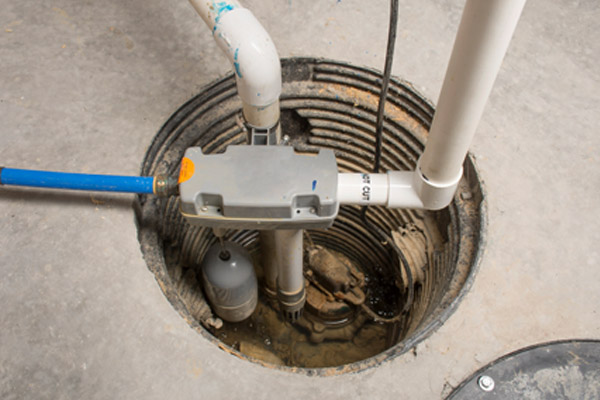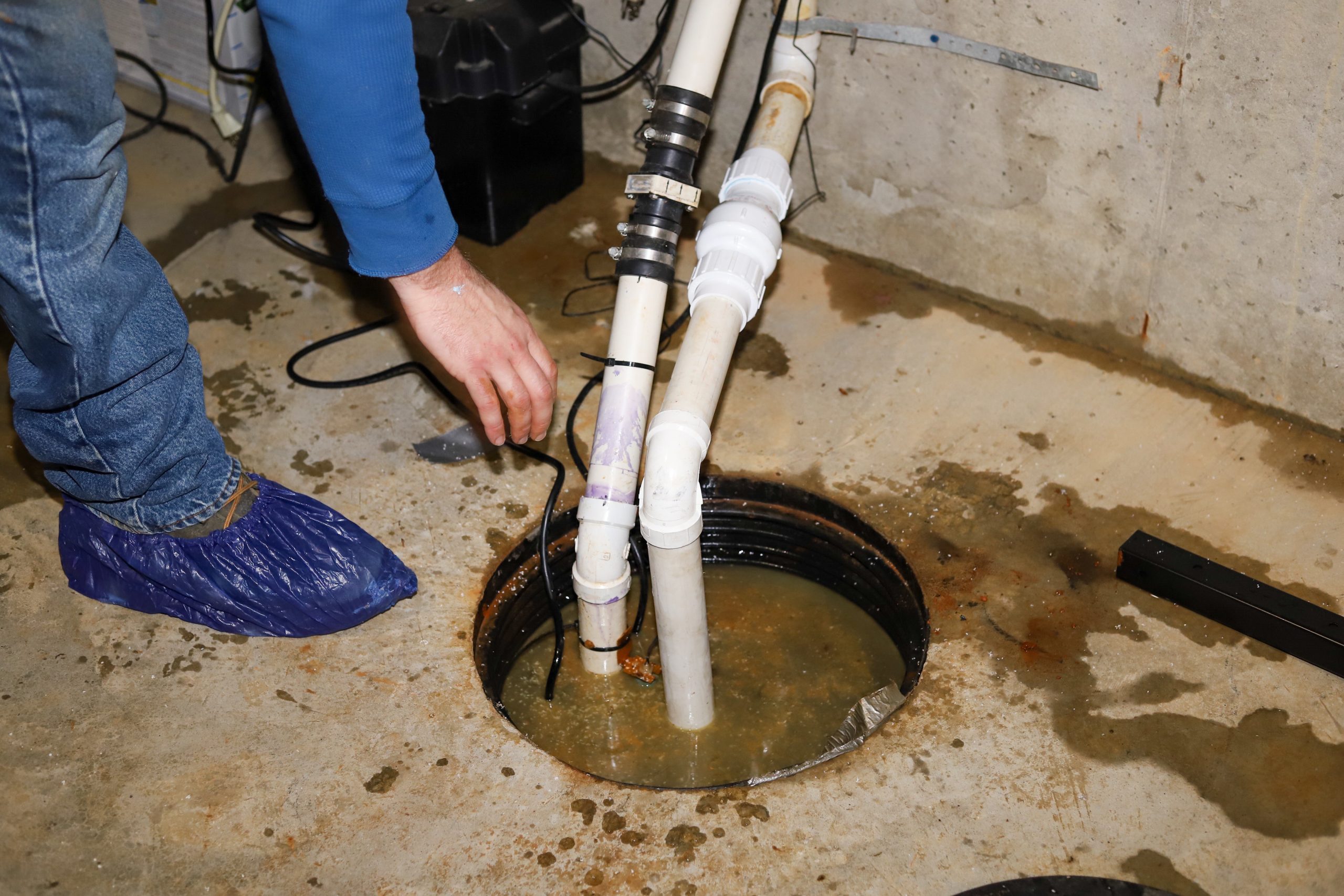This post following next in relation to Steps to Cleaning Your Sump Pump Properly is relatively informative. Have a go and draw your own personal conclusions.

Sump pumps are vital parts in several homes, particularly in areas vulnerable to flooding or too much wetness. They assist prevent water damage by successfully getting rid of excess water from basements or crawl spaces. Nonetheless, like any other device, sump pumps need normal upkeep to guarantee they work efficiently when required the most. Cleansing your sump pump is a vital part of its maintenance, and understanding how to do it properly can save you from expensive fixings and potential catastrophes.
Intro
Keeping a tidy sump pump is crucial for its appropriate functioning and durability. Ignoring this necessary task can lead to blockages, malfunctions, and inevitably, water damages to your home. As a result, discovering exactly how to clean a sump pump is essential for house owners that count on these tools to maintain their cellars dry and safeguarded.
Indications of a Dirty Sump Pump
Recognizing when your sump pump requires cleaning is vital for protecting against potential malfunctions. Some usual signs that show a filthy sump pump consist of strange sounds throughout operation, reduced water flow, and noticeable particles in the pit. If you discover any one of these signs and symptoms, it's essential to clean your sump pump quickly to stay clear of any kind of additional concerns.
Getting ready for Cleansing
Before you begin cleaning your sump pump, it's necessary to take some security preventative measures. Begin by shutting off the power to the pump to prevent any kind of electric accidents. In addition, wear proper safety gear, such as gloves and goggles, to safeguard on your own from dirt, particles, and prospective microorganisms.
Comprehending the Sump Pump
Prior to diving into the cleaning process, it's vital to have a standard understanding of just how a sump pump functions. Typically installed in a pit or container below the cellar flooring, a sump pump contains a number of vital components, including a pump, a float switch, and a discharge pipeline. When water builds up in the pit, the float switch turns on the pump, which after that pumps the water out via the discharge pipeline, away from the building's foundation.
Detailed Overview to Cleaning a Sump Pump
Shutting Off the Power
Begin by detaching the power supply to the sump pump to avoid any type of crashes while cleansing.
Looking For Proper Functioning
Before reinstalling the pump, do a fast test to make certain that the float button triggers the pump correctly. Put some water into the sump pit and observe the pump's operation. If every little thing is functioning correctly, you can rebuild the pump and reconnect the power supply.
Getting Rid Of Debris and Dust
Make use of a pail or a scoop to remove any noticeable particles, dust, or sediment from the sump pit. Dispose of the debris effectively to avoid it from clogging the pump or the discharge pipe.
Cleaning up the Pump and Float Change
As soon as the pit is free from particles, very carefully get rid of the pump from the pit. Evaluate the pump and the float button for any kind of indications of damage or wear. Utilize a soft brush or fabric to clean up the surface areas and eliminate any accumulated grime.
Purging the System
After cleaning up the pump and float button, purge the sump pit with clean water to get rid of any kind of continuing to be dust or debris. This will assist ensure that the pump runs smoothly and successfully.
Upkeep Tips to Maintain Your Sump Pump Clean
Along with periodic cleansing, there are numerous upkeep ideas you can comply with to keep your sump pump in optimal problem:
Final thought
Cleaning your sump pump is an essential aspect of its upkeep and makes sure that it runs properly when you require it one of the most. By following the steps described in this overview and integrating routine maintenance right into your routine, you can extend the life-span of your sump pump and safeguard your home from water damages.
6 STEPS ON HOW TO CLEAN A SUMP PUMP PROPERLY
UNDERSTANDING SUMP PUMPS
Your sump pump plays a crucial role in protecting your home by managing and removing excess water. It primarily functions as a “shield”, guarding your basement against the damaging effects of water accumulation. The pump is housed in a sump pit in the lowest part of your basement, and its job is to pump out any water that collects there.
During heavy rainfalls or when snow melts rapidly, water can infiltrate your basement, posing potential risks like flooding, structural damage, and harmful mold growth. Here, the sump pump springs into action, pumping out the intruding water and directing it away from your home.
SAFETY FIRST
Before cleaning, remember to prioritize safety. Disconnect the sump pump from the power source to prevent any accidental electric shocks. Also, wear sturdy gloves to protect your hands from any sharp or dirty components within the pump.
REMOVE THE SUMP PUMP
After ensuring your safety, the next step is to remove the sump pump from its pit. Doing this might require careful maneuvering as you don’t want to damage any pump components. Once removed, clean the sump pit to remove any accumulated debris or sludge.
INSPECT THE PUMP
Inspect the pump for any visible signs of wear or damage. Check the power cord, float switch, and impeller housing. If any components look worn out or damaged, consider replacing them to ensure optimal performance.
CLEAN THE PUMP
Thoroughly clean the pump with warm, soapy water. Make sure to rid it of any dirt, gravel, or other debris that might impede its performance. You can use a toothbrush to clean the small, hard-to-reach parts of the pump.
REINSTALL THE SUMP PUMP
Reinstall the pump into the sump pit Make sure it’s positioned correctly to remove the water effectively Once it’s back in place, reconnect it to the power source TEST THE PUMP
Finally, pour some water into the pit to ensure the pump works correctly. It should start automatically and begin pumping out the water; if it doesn’t, check the power source and the positioning of the pump.
Remember, while cleaning your sump pump is an essential part of home maintenance, hiring a professional plumber for a thorough inspection and cleaning at least once a year is also important. This will ensure that your pump is in optimal condition, ready to protect your home from potential water damage.
BEST PRACTICES FOR CLEANING SUMP PUMP DISCHARGE PIPES
Regular Inspection: Regularly inspect your discharge pipes, especially during heavy rainfall or snowmelt periods. Look for any signs of blockage or damage. Early detection of problems can prevent serious issues down the line. Periodic Cleaning: Over time, sediment and debris can accumulate in the discharge pipes, impeding the flow of water. Regular cleaning helps keep the pipes clear and functioning efficiently. You can use a high-pressure water jet to effectively clean the pipes. Insulation During Winter: In colder climates, discharge pipes can freeze, blocking the outflow of water. Protect your discharge pipes from freezing temperatures by insulating them with foam pipe insulation. This will ensure the sump pump can continue to discharge water even in freezing conditions. Proper Positioning: The discharge pipe should be positioned to direct water away from your home’s foundation. Improper positioning can lead to water seeping back into the basement. Ensure the pipe is long enough and angled correctly. Installation of a Check Valve: A check valve prevents water from flowing back into your sump pit after the pump has pushed it out. Installing a check valve helps maintain the efficiency of your sump pump and reduces the risk of flooding. Minimize Pipe Turns: Every curve or turn in the discharge pipe can decrease the efficiency of water flow. By minimizing turns and bends in your discharge pipe, you can increase the efficiency of your sump pump. https://www.fullspeedplumbing.com/how-to-clean-a-sump-pump-properly9999/

I came across that post on How To Effectively Clean A Sump Pump while browsing the web. Are you aware of someone else who is inquisitive about the subject? Please feel free to promote it. Thank-you for your time spent reading it.
View More